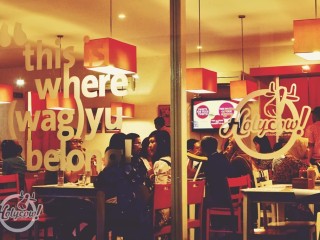 Tonnages of Australian beef exports to Indonesia in both live and boxed form could see the country challenge some of Australia's biggest export markets in volume terms this year.
Tonnages of Australian beef exports to Indonesia in both live and boxed form could see the country challenge some of Australia's biggest export markets in volume terms this year.
Indonesia has announced plans to significantly increase imports of both live cattle and boxed product this year as it endeavours to overcome a beef shortage that is keeping prices out of reach of most consumers.
Indonesia’s trade ministry has released figures indicating that it intends to import 750,000 cattle from Australia this year, 70pc as feeder cattle and 30pc as ready-for-slaughter cattle.
Using an average yield calculation of 180kg of saleable beef per head for all export cattle, that projected volume suggests Australia’s live cattle exports to Indonesia will amount to around 135,000t in boxed beef equivalent this year.
That figure is based on several assumptions including that the Indonesian trade ministry issues full permits for 750,000 head as the year progresses, that the transition into election mode from April to October will not significantly disrupt the release of permits, and that Australian exporters will be able to find the 750,000 cattle required to fill those orders.
Australian meat exporters have also been pumping higher volumes of boxed beef into Indonesia since new regulatory arrangements for imports were announced in October last year.
After averaging around 2000t/month last year, monthly export volumes shot up to 6000t in November and 4700t in December.
The Indonesian Government’s strong desire to get more beef into its market as quickly as possible to ease pressure on prices and inflation is likely to see strong import levels sustained throughout 2014.
If monthly imports average 5000t this year, a figure which would not seem unlikely given the depth of current demand, annual exports this year will push above 60,000t.
Most boxed product going into the market from Australia is frozen trim, grinding beef and manufacturing cuts such as blade, chuck and knuckle, destined for the hamburger trade or to be processed on an industrial scale into pre-packaged bakso balls sold for household use in supermarkets.
Demand for higher value cuts in both chilled form is also increasing in line with the strengthening growth of Indonesia’s middle class.
One of the most notable changes in Jakarta in recent years has been the increasingly common appearance of the word ‘steakhouse’ at street level.
Not so long ago the main option for middle class couples or families looking for a good steak was to dig deep and dine at an expensive five-star hotel restaurant.
Now retail food outlets are targeting the growing middle class sector by offering a good steak eating experience at an affordable price and are popping up right across Jakarta and many of the country’s rapidly growing regional cities.
Among the many chains that have sprung up in the past 12 months is one called Holy Cow.
The chain started in a tent on a Jakarta Street by a former local television chef. His stated aim was to provide “Wagyu for everyone” and to allow people to enjoy “heavenly meat at a very affordable price.” Consumers can choose from a range of loins and graded Wagyu steaks at reasonable prices, served in a convenient, fast-food style environment.
Holy Cow has since exploded in popularity, expanding to eight restaurants last year with another four reportedly planned to be opened early this year.
Meat and Livestock Australia’s Indonesia region manager Dr John Ackerman told Beef Central in Jakarta last Friday that the recent changes to import regulations were likely to encourage more product to enter the market.
In recent years the quota system had made it harder for chains similar to Holy Cow to access high quality beef in the volumes they required.
“The regulatory change will make a significant difference in terms of what can come in, because now, rather than setting a target at the beginning of the year, the Government is saying to importers ‘ask for what you want, we’ll give you the permit, and the underlying aspect is you have to use 80pc of it,” Dr Ackerman explained.
“So if you’ve got the market there for importers to be able to sell 80pc of what they receive import permits for – and it certainly looks like it is with all of these steak houses popping up and the retail sector growing here as well – it is all relatively positive in terms of what we have to look forward to this year.”
If Indonesia’s projected import volumes come to fruition this year, the market will take close to 200,000t of Australian beef in both boxed and live cattle form, a volume which would position it among Australia’s largest export destinations.
Australia’s largest export markets by volume in 2013 were Japan (289,000 tonnes); the US (213,000t), China (154,000t) and Korea (144,000t).
Indonesia ranked as Australia’s fifth largest market for boxed beef in 2013 with 44,000t. Indonesia also imported around 420,000 live cattle last year (the official tally has yet to be confirmed), or roughly 75,000t in boxed beef equivalents, equating to a collective total of 120,000t of Australian beef exports for the year.
